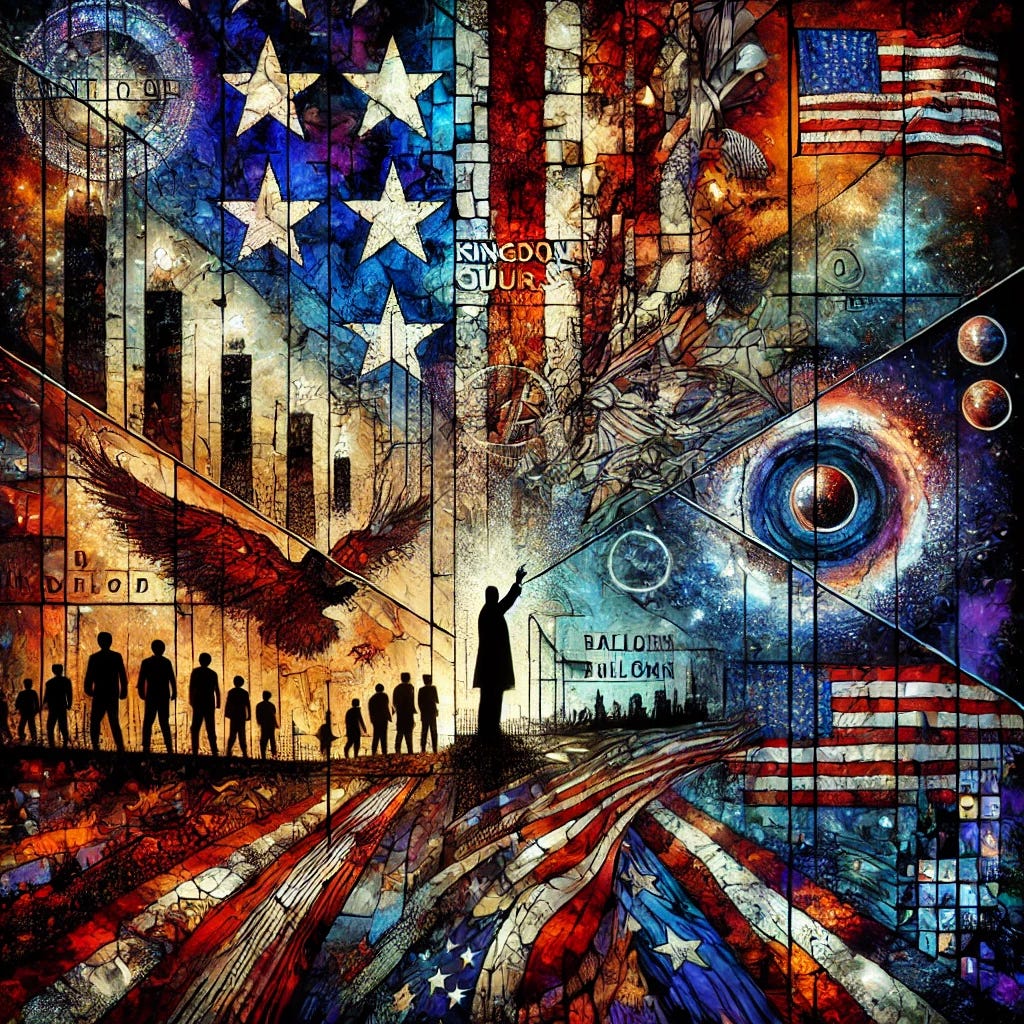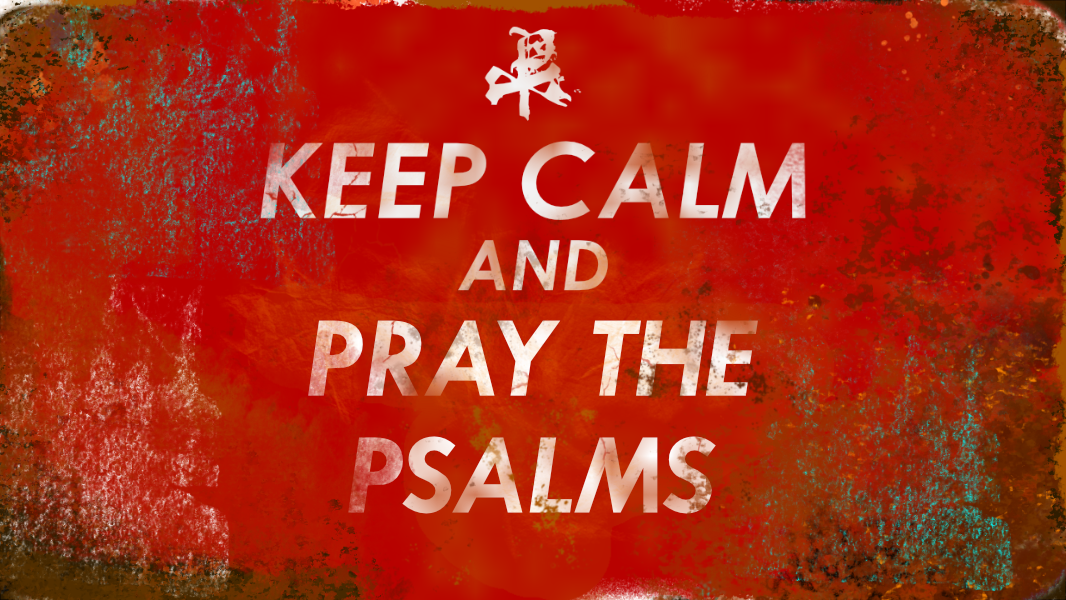When the System Bends
Dalio’s Stage 5 Civil War
"When the system bends, it groans; when it breaks, it bleeds. But the Logos cannot be broken."
I. Dalio’s Grand Frame: The Big Cycle of Nations
Ray Dalio, drawing on over 50 years as a global macro investor and his study of the last 500 years of empire and economy, lays out what he calls the "Big Cycle"—a repeating pattern in which dominant powers rise, flourish, decay, and fall. These stages are not hypothetical. They are historical rhythms etched in blood and coin.
In his analysis, the United States is in Stage 5 of this cycle, a prelude to what he calls "civil war," though he notes this need not always be violent. Stage 5 is the juncture where bad financial conditions and severe internal conflict converge: income inequality, high debt loads, cultural polarization, and the evaporation of institutional trust define the moment.
Dalio identifies six stages:
Stage 1 – A new order, emerging from civil war or revolution, with unity, sacrifice, and rebuilding.
Stage 2 – Peace, productivity, and expanding prosperity.
Stage 3 – Increasing excess, luxury, and debt.
Stage 4 – Decay, infighting, and loss of competitiveness.
Stage 5 – Financial strain, fragmentation, class conflict, and populist revolt.
Stage 6 – Systemic collapse, civil war, or revolution.
The current U.S. condition, per Dalio, is a late-Stage 5 society. The warning signs include ballooning debt, unfunded liabilities, elite decadence, eroded social trust, and the demonization of political opponents. Meanwhile, bureaucratic bloat renders problem-solving nearly impossible, and media ceases to serve truth and becomes a weaponized echo chamber.
He names the driving dynamic a "classic toxic mix": 1) unsustainable debt, 2) vast wealth and values gaps, and 3) a severe negative shock—be it pandemic, financial crash, or war. These three, once synchronized, ignite the unraveling.
II. Cloward and Piven: Origins of a Sabotage Theology
Before it became a conspiratorial shorthand, the Cloward-Piven strategy was real policy theory. It was outlined in a 1966 article in The Nation by Columbia University professors Richard Cloward and Frances Fox Piven. As sociologists with Marxist sympathies, their goal was explicit: overwhelm the American welfare system to force federal redistribution of income through a guaranteed national income.
Their strategy wasn’t formulated in a vacuum. Cloward and Piven were deeply embedded in the institutional left, linked to the Ford Foundation, the National Welfare Rights Organization, and the Democratic Socialists of America. They were ideological tacticians with academic legitimacy and elite connections—funded, platformed, and protected.
This wasn’t just theory—it was operational:
They worked to flood local welfare rolls in cities like New York.
They targeted Democratic machines to force broader federal intervention.
They collaborated with Saul Alinsky-style organizing networks.
Their method was seduction by overload. If the system could be made to fail under the weight of its own promises, a new system could be born. This was revolution not by fire, but by forms—bureaucracy as battering ram.
Who paid for it? Tax-exempt foundations. Ivy League endowments. Government grants. USAID. We footed the bill, seduced by the ideal of “one nation” (globalist-state) “under God.”
III. Stage 5 Meets Strategy: A Collision of Diagnosis and Design
Dalio’s work is a pattern map. Cloward and Piven’s work is a pressure plan. They do not agree—but they rhyme.
Where Dalio sees cyclical inevitability, Cloward-Piven injects willful acceleration. Dalio’s Stage 5 marks the breakdown in financial discipline, civic trust, and institutional coherence. Cloward and Piven exploit precisely these seams.
They are not responsible for the entire cycle—but they act as midwives to the chaos that defines its latter phases.
Their fingerprints align with Stage 5’s most telling signs:
Debt explosion → Mandated obligations exceed taxable income.
Class warfare → Exploited to justify ever-broader state power.
Loss of trust → Polarized media and policy failure destroy the middle.
Populist uprising → Fueled by pain, confused by misdirection.
Dalio names the breakdown. Cloward-Piven helped ensure it would not be met with repair.
IV. A Sacrament of Collapse
Dalio’s writing is secular. But what he describes is deeply religious. Stage 5 is not just economic decay—it is the inversion of virtue:
Debt becomes compassion.
Luxury becomes equity.
Truth becomes narrative.
This is a false liturgy. Bureaucracy is its priesthood. Academia, its cathedral. Media, its choir.
Cloward and Piven are best read as theologians of this anti-order. They believed in an eschaton of state salvation—birthed by collapse, purified through policy, administered by the enlightened.
But Dalio’s data has no such faith. His models show that such collapses do not result in utopias. They bring autocracy. Despotism. Hunger. It is always easier to break than to build.
V. Populism and the Orphaned People
Stage 5 is also the age of populism. When systems break and trust vanishes, the people look for a king—any king. Left or right, populism is the cry of the betrayed. It reflects longing, not coherence.
Dalio sees this clearly. He names Trump, Sanders, Warren, AOC—not as villains or heroes, but as symptoms. Moderate governance dies in Stage 5. Rage fills the void.
This populism, however, can be co-opted. Cloward-Piven tactics blur righteous resistance into blind revolt. The people march—but toward what?
Here the Church must rise. Not with slogans. Not with ideology. But with clarity. With Logos. With truth that cannot be gamed by algorithm or overwhelmed by strategy.
VI. Propaganda and the Fog of Civil Drift
Dalio’s breakdown of Stage 5 includes another marker: the loss of shared truth. Media becomes warfare. Narrative becomes a weapon. The idea of a common good vanishes.
Cloward and Piven understood this too. They thrived in confusion. The louder the outcry, the more eager the state’s appetite for control.
In this climate, journalism withers. Platforms reward rage. Real discourse is replaced by spectacle. And those who benefit are not the poor—but the managers of collapse.
VII. What Breaks and What Does Not
Dalio ends with a sober reflection: Stage 5 can bend into peace—or break into Stage 6. Civil war, revolution, systemic reset.
He does not say what will happen.
But we must.
The Church must be the institution that cannot be broken. When the markets crash, when the cities riot, when the elite flee their own havens—what remains must be the gospel. Not capitalism. Not communism. Not technocracy.
Christ Jesus.
Incarnate. His Kingdom. His Body.
His Spirit.
His Words.
Do not ignore Dalio’s signs. This is no tropical zodiac. Cloward and Piven, Marcuse and Monsanto have strategy, no matter your faith in their incompetence. But the Word made flesh is truth in you the moment you believe it:
"Of the increase of His government and of peace there shall be no end." (Isaiah 9:7)








Demographer Neil Howe identifies the same cycles in history… and refers to the state that we are currently in as: the Fourth Turning…